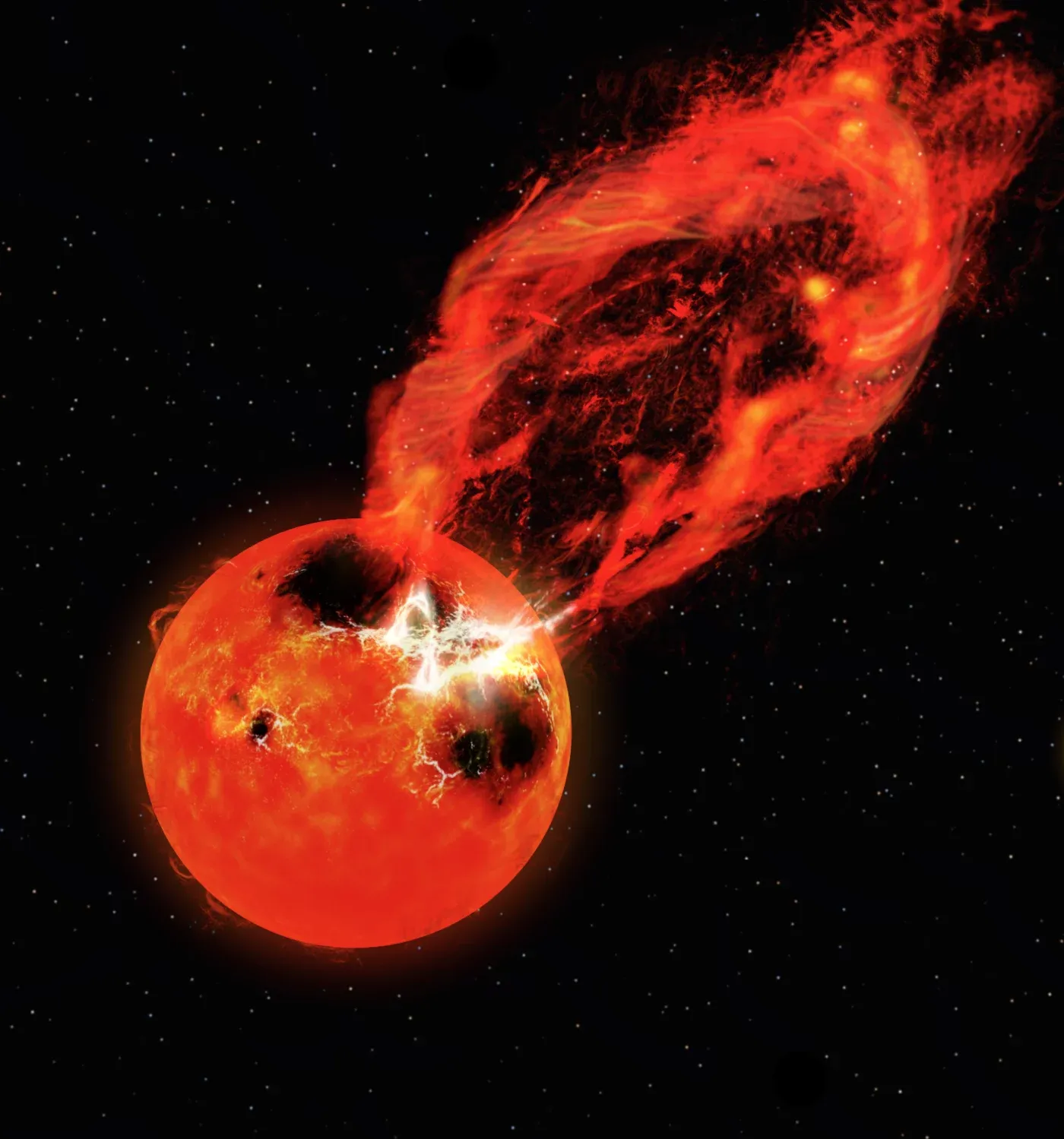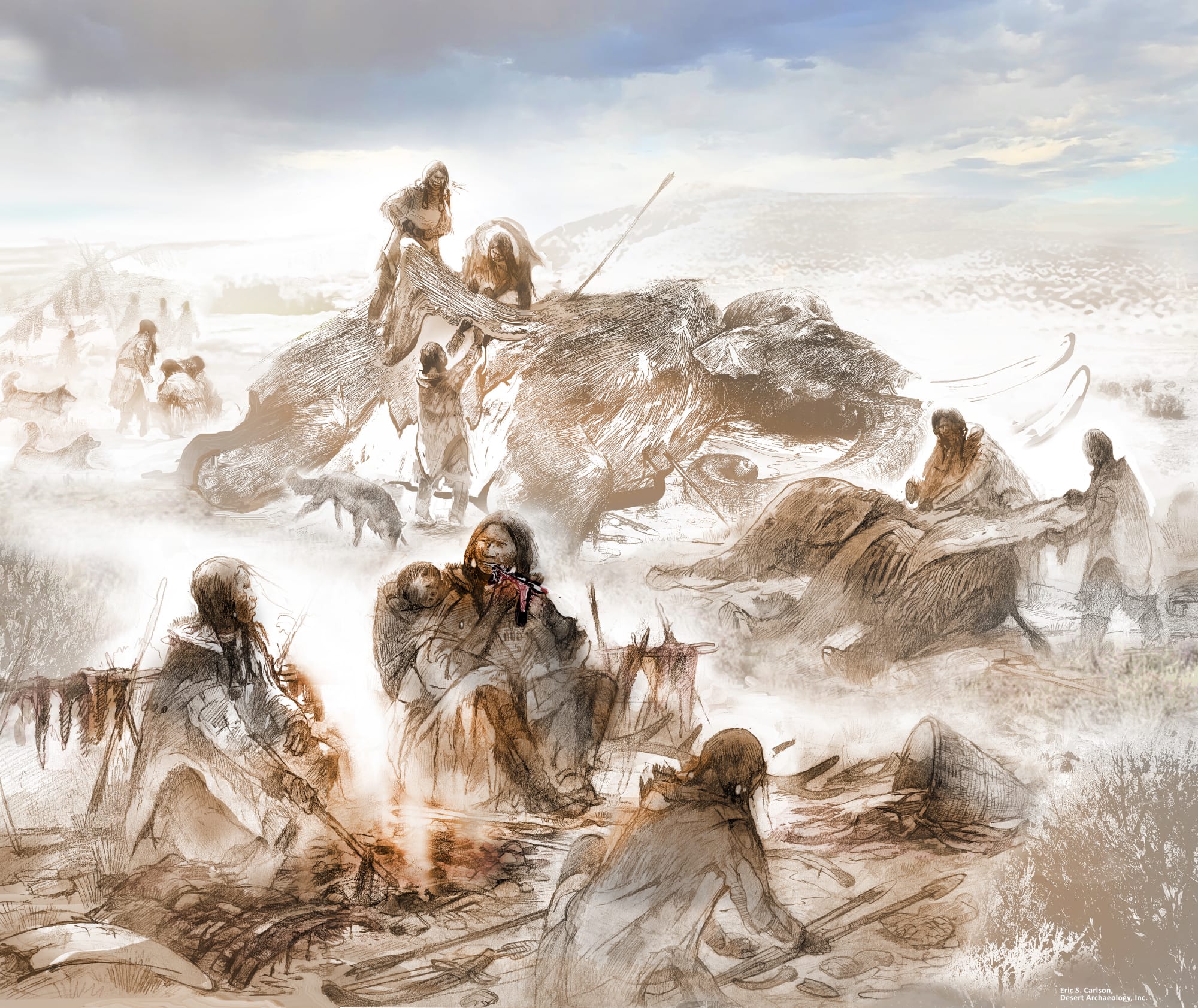Disney Princesses Are at Risk of Rabies and Fatal Maulings
Welcome back to the Abstract!
In the spirit of catching up with relatives over the holidays, I’d like to introduce you to a member of your extra-extended family: The Saber-toothed Gorgonopsian from Mallorca. Get acquainted with your great-great-great (insert about 100 million greats here) grandmother’s cousin. It’s probably not going to behave well at the dinner table.
Then, the grim prognoses of Disney princesses are outlined in one of the world’s premiere medical journals. Next, I’m back on the cannibalism beat; I just can’t help myself. Finally, an archaeological adventure a world away.
Happy winter solstice to all who thrive in darkness. If you’re in the Southern Hemisphere, say hi to the Sun for us.
Wet Hot Pangean Summer
If you trace your lineage far back enough, you will eventually reach therapsid ancestors. Mammals sprouted out of this ancient group of creatures some 225 million years ago, around the same time that dinosaurs were ascending to world domination. But though therapsids were abundant during the Permian era, the period before the emergence of mammals and dinosaurs, gaps in the fossil record have made it difficult to reconstruct the origins of this ancestral group.
Enter: DA21/17-01-01, a fossil specimen that dates back at least 270 million years, making it likely the oldest therapsid ever found. The dog-sized animal was a “gorgonopsian,” a group of therapsid carnivores with saber-like teeth reminiscent of later mammals, but that still maintained more reptilian features, including oviparity (they laid eggs rather than birthing live offspring).
Paleontologists were surprised to discover this gorgonopsian on the Spanish island of Mallorca, which was located in the equatorial region of the supercontinent Pangaea during the Permian. Almost all other gorgonopsian remains are preserved in locations like Russia and South Africa that would have been at higher latitudes, nearer to the poles. Previous work has suggested that therapsids originated at higher latitudes and then radiated into equatorial regions, but DA21/17-01-01 hints that the reverse may be true.
“The gorgonopsian from Mallorca provides the first unequivocal evidence that therapsids were indeed present in the summer wet biomes of equatorial Pangaea during the early–middle Permian transition, suggesting that the group may have originated in lower, tropical latitudes, rather than in the higher latitudes where nearly all of their fossils are known,” said researchers led by Rafel Matamales-Andreu of the Museu Balear de Ciències Naturals.
“If therapsids originated in the tropics, this has implications for metabolic evolution in the clade,” the team added.
First off, let’s acknowledge that “the gorgonopsian from Mallorca” is a sublime phrase. It should be the title of a Criterion Collection classic. But more importantly, the discovery of this “unambiguously early” therapsid in the Pangean tropics offers a fleeting glimpse of a “ghost lineage” of mammal precursors. Ghost lineages are branches of the evolutionary tree that are presumed to exist based on circumstantial evidence, but that didn’t leave direct traces in the fossil record. Therapsid fossils proliferate in the middle and upper Permian, but scientists have long suspected that they originated much earlier, more than 300 million years ago.
“We confirm the traditional understanding that there was a relatively long ghost lineage of about 15 million years between the origin of ‘total-group’ therapsids and the radiation of the major therapsid clades,” around 278 million years ago, the team said.
“This discovery opens the door for findings that may fill in the early therapsid fossil gap in the lower Permian, not in high latitude sites as traditionally thought, but in the so far poorly explored lower–middle Permian areas of palaeoequatorial Pangaea. Those locations hold the potential to elucidate the early evolution of therapsids and the origins of mammalian features.”
In other words, it’s worth searching for more of these early therapsids at overlooked sites, like the Balearic Islands. Some features that distinguish us as mammals today have their roots in what the study describes, somewhat luxuriously, as the “ancient summer wet biome of equatorial Pangaea.”
Death Becomes Disney Princesses
Every December, the British Medical Journal publishes a Christmas issue filled with parody studies and light-hearted editorials. My favorite example this year confronts the pressing health problems of Disney princesses, such as Cinderella’s risk of respiratory illness, Belle’s exposure to rabies, and Pocahontas’ bone-shattering penchant for diving off high cliffs.
But perhaps the best case study is Jasmine, whose social isolation is described in these devastating terms: “While the Genie might sing ‘you ain’t never had a friend like me,’ the truth is that Jasmine has no friends at all,” according to researchers led by Sanne van Dijk of the University of Twente.
Wow, the medical consensus about Jasmine is pretty harsh. To add insult to injury, the editorial notes that Jasmine’s one companion, the tiger Rajah, “poses a risk of zoonotic infection as well as craniofacial and cervical spinal injuries” adding that “although Rajah seems like a sweet tiger, its natural instincts could lead to a dangerous and potentially fatal situation—a true Arabian nightmare.”
Please Disney, listen to these experts and start showing the real-life consequences of the princess lifestyle. We need a rabid Belle foaming at the mouth, Pocahontas in a full body cast, and Rajah brutally mauling Jasmine. Otherwise, we are sending a message to young people that it is safe to hang out with captive tigers and chimeric beasts while jumping off Niagara Falls.
I will note that the study has nothing to say about Moana, who I will hereafter conclude is the healthiest Disney princess. We salute a physiologically robust chief.
Massacre at Charterhouse Warren
Steel yourself for some bad vibes, because this is a story about an unhinged cannibalistic massacre that occurred 4,000 years ago. Archaeologists working at Charterhouse Warren, an English Bronze Age burial site, have discovered evidence of a grotesque attack designed to “other” its many victims through butchery and consumption of flesh.
“Some 37 men, women and children—and possibly many more—were killed at close quarters with blunt instruments and then systematically dismembered and defleshed, their long bones fractured in a way that can only be described as butchery,” said researchers led by Rick Schulting of the University of Oxford. “Body parts were deposited in what was probably a single event between 2210 and 2010 BC, in a partly infilled shaft that was still 15 meters deep.”
“While evidence for interpersonal violence is not unknown in British prehistory, nothing else on this scale has been found,” the team noted.

It’s unlikely that these acts were motivated by either “culinary cannibalism,” embodied by Hannibal Lecter, or “survival cannibalism,” the desperate acts of starvation typified by tragedies like the Donner Party. The cruel and unusual treatment of the victims, even after their deaths, suggests a deliberate attempt at dehumanization.
The events “may be best interpreted as an extreme form of ‘violence as performance,’ in which the aim was to not only eradicate another group, but to thoroughly ‘other’ them in the process,” according to the study. “While the remains themselves seem to have been removed from view soon afterwards (to judge from the paucity of carnivore scavenging), an event of this scale could not be hidden, and no doubt resonated across the wider region and over time. In this sense it was a political statement.”
My advice is to steer clear of political statements that demand ritualistic cannibalism, but I’m open to the marketplace of ideas.
It Belongs in a Marseum
Holcomb, Justin A et al. “The emerging archaeological record of Mars.” Nature Astronomy.
Let’s close out with an archaeology story that doesn’t involve dehumanizing bloodbaths; we will need to travel to another planet to accomplish this task. No massacres have occurred on Mars at the time of this writing, but the red planet is home to plenty of archaeological sites and artifacts, which I shall hereafter refer to as Martifacts.
Technological relics on Mars, such as dead rovers or spent heat shields, are part of the human archaeological record, raising questions about the culture and heritage value of Martifacts.
“Some scientists have referred to this cultural material as ‘space trash’ or ‘galactic litter,’ implying that it may have limited scientific value and could cause environmental problems and put future missions at risk,” said researchers led by Justin Holcomb of the Kansas Geological Survey.
“We agree that these concerns warrant further investigation, but we argue that the objects need to be evaluated as important cultural heritage in need of protection because they record the legacy of space exploration by our species,” the team said.

The article reminds me of the heartrending xkcd comic that portrays NASA’s Spirit rover coming to terms with its abandonment on Mars. Space archaeology can seem esoteric but it is relevant to consider values about our off-Earth heritage at a time when visions of Martian colonization are culturally ascendent. There is more to this extraterrestrial archaeological record than the sum of its dusty metal parts.
Also, I’m calling dibs on the remains of the Opportunity rover right now and we all know that dibs are legally binding.
Thanks for reading! See you next week.



